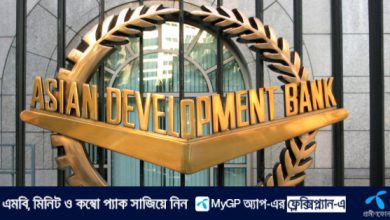A roof over their heads, but the fight continues: Ashrayan beneficiaries seek sustainable future


Finding refuge under the Ashrayan project in Jummapara New Colony offered a roof over their heads, but it brought new challenges
A general view of semi-pucca houses built under the government’s Ashrayan-2 project aimed at providing abode to the homeless and landless families in Bangladesh. Photo: UNB
“>
A general view of semi-pucca houses built under the government’s Ashrayan-2 project aimed at providing abode to the homeless and landless families in Bangladesh. Photo: UNB
Abdur Rashid and Bobita’s story is one of many in Lalmonirhat. Devastating floods in 2017 left them homeless in Char Gokunda, along the Teesta River.
Finding refuge under the Ashrayan project in Jummapara New Colony offered a roof over their heads, but it brought new challenges.
Their family grew, with a son and daughter, and so did their needs. While Abdur Rashid juggles mason, van driver, and day labourer jobs, Bobita worries.
“Education and food are a struggle. We can’t save for their future,” she says. “This tiny plot won’t hold us forever.”
This sentiment is echoed by Noor Asma, another beneficiary. She and her family raise livestock and work on others’ land, but dream of a larger plot and a cow.
“I work tirelessly so my daughters don’t share my unstable life,” Asma says. “Every penny saved goes towards a future where this space isn’t cramped.”
Forty-year-old Asia Begum shares similar aspirations. “Having a home after years on the streets has ignited a desire to improve our lives,” she says, taking on various jobs to make ends meet.
Aditmari Upazila Nirbahi Officer Nur Alam Siddiqui acknowledges these struggles. “While the houses have fulfilled dreams, the fight for a better life goes on,” he says. “Their main goal is to secure their children’s future.”
The project’s success is undeniable. Elias Mehdi, deputy project director of Ashrayan-2, said that over 4.3 million people have been provided homes through the Ashrayan project and related initiatives nationwide.
In five phases across 464 upazilas in 58 districts, all landless and homeless individuals have been rehabilitated. Additionally, 253,130 houses have been allocated this year, with 18,566 more set to be handed over today.
Hafizul Islam, a resident, exemplifies this. “Now that I have a home, I can focus on my children’s education,” he says, repairing vehicles to earn extra income.
Even those who were once most vulnerable are finding hope. Amina and Shamina Begum, widowed sisters in their fifties, used to beg. Now, they have a home, cook their own meals, and raise animals. “With some help, we could raise a cow or goat,” they say.
Another widow, Jobena Khatun, shares a story of resilience. With her daughter, a young widow herself, they received two houses. The daughter works in Dhaka for a better future, while Jobena cares for her grandson.
Bahar Ali, a beneficiary, offers a glimpse of success. His tin shop provides a steady income, allowing him to dream of his son’s education. “A good education,” he says, “is our sustainable future.”




